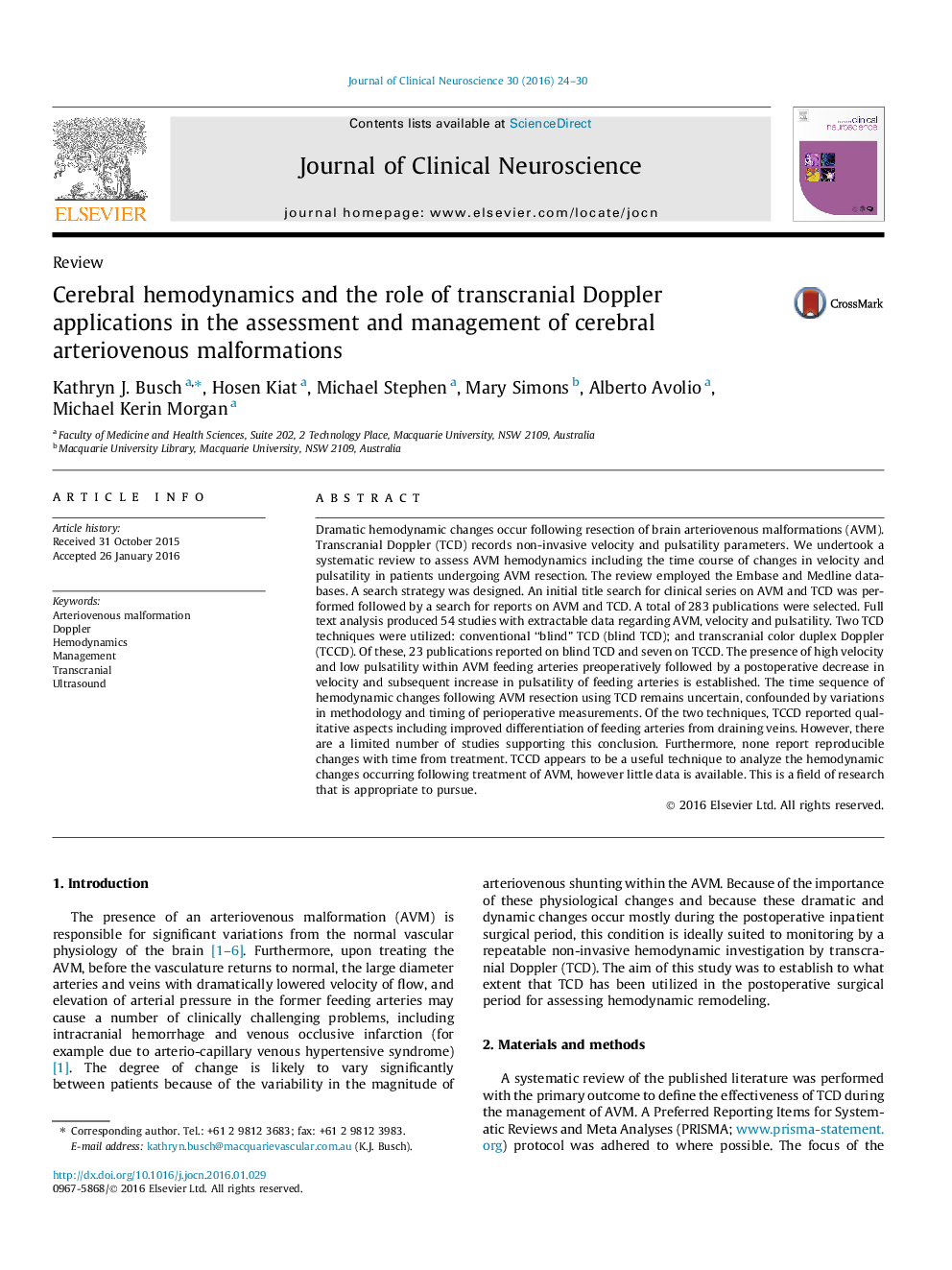| Article ID | Journal | Published Year | Pages | File Type |
|---|---|---|---|---|
| 3058134 | Journal of Clinical Neuroscience | 2016 | 7 Pages |
•A systematic review on the role of transcranial Doppler in the management of cerebral arteriovenous malformations (bAVM).•Preoperative and postoperative hemodynamic properties of bAVM are summarised.•Transcranial color duplex appears to be a useful technique for further research with regards to bAVM.
Dramatic hemodynamic changes occur following resection of brain arteriovenous malformations (AVM). Transcranial Doppler (TCD) records non-invasive velocity and pulsatility parameters. We undertook a systematic review to assess AVM hemodynamics including the time course of changes in velocity and pulsatility in patients undergoing AVM resection. The review employed the Embase and Medline databases. A search strategy was designed. An initial title search for clinical series on AVM and TCD was performed followed by a search for reports on AVM and TCD. A total of 283 publications were selected. Full text analysis produced 54 studies with extractable data regarding AVM, velocity and pulsatility. Two TCD techniques were utilized: conventional “blind” TCD (blind TCD); and transcranial color duplex Doppler (TCCD). Of these, 23 publications reported on blind TCD and seven on TCCD. The presence of high velocity and low pulsatility within AVM feeding arteries preoperatively followed by a postoperative decrease in velocity and subsequent increase in pulsatility of feeding arteries is established. The time sequence of hemodynamic changes following AVM resection using TCD remains uncertain, confounded by variations in methodology and timing of perioperative measurements. Of the two techniques, TCCD reported qualitative aspects including improved differentiation of feeding arteries from draining veins. However, there are a limited number of studies supporting this conclusion. Furthermore, none report reproducible changes with time from treatment. TCCD appears to be a useful technique to analyze the hemodynamic changes occurring following treatment of AVM, however little data is available. This is a field of research that is appropriate to pursue.
